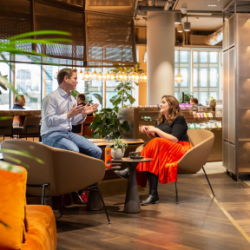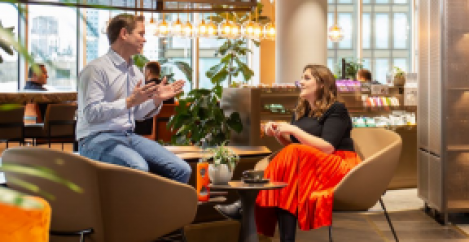November 6, 2020
Flex space occupancy remains stable through Covid-19
 A third of flexible workspace providers reported that occupancy rates have remained relatively stable through the global lockdown, only falling by 10 percent. On average, operators reported demand for flex space at 52 percent of pre-Covid levels, but some suburban markets have seen significant growth and pricing in those areas has increased.
A third of flexible workspace providers reported that occupancy rates have remained relatively stable through the global lockdown, only falling by 10 percent. On average, operators reported demand for flex space at 52 percent of pre-Covid levels, but some suburban markets have seen significant growth and pricing in those areas has increased.
In its latest UK flexible workspace market review, The Changing Face of an Industry, The Instant Group’s research claims a rise in demand within the smaller, regional markets, with market towns and city outskirts driving deals. But despite both pricing and occupancy staying resilient during 2020, there are tough times ahead with the extended lockdown putting pressure on some flex business models.
John Duckworth Head of UK and EMEA at the Instant Group, said: “The flex industry has experienced a dual impact – on the one hand, the pandemic exposed weaknesses in some of its operating models but the future of the office market looks to be considerably more agile, which will ultimately play to its strengths.
“Whilst the remainder of the pandemic period requires nerves of steel, the recovery phase will see significant opportunities as the sector’s relevance in terms of corporate recovery and strategic portfolio solutions come to the fore.”
[perfectpullquote align=”right” bordertop=”false” cite=”” link=”” color=”” class=”” size=””]”Whilst the remainder of the pandemic period requires nerves of steel, the recovery phase will see significant opportunities”[/perfectpullquote]
Pre-Covid, an increasing number of corporate occupiers were turning to flex space. A trend that Instant expects to continue once businesses have re-evaluated their current real estate portfolio and have a clearer picture of their future needs. However, Instant’s data also suggests an increase in demand for smaller offices of 1-2 desk as the contingent workforce drove the vast majority of deals during lockdown – 80 percent of demand is currently coming from individuals/freelancers and small companies.
The research also claims that a significantly higher proportion of operators in suburban locations have seen contract terms increase compared to those in city centre locations, suggesting that occupiers are much more confident in the future of their suburban office locations.
“For operators and clients alike this year has proved extremely challenging but there is a very palpable sense of significant change in the future of the office market. Although it is still very early to make sweeping judgements but the way space is procured and used, appears to be changing and businesses of all sizes need more agile solutions for to face up to difficult market conditions.” explained John Duckworth.
Supply and diversity of location
Before Covid-19 hit, supply in the flexible office industry was increasing at a rapid pace, with a growth of 11 percent throughout 2019. Although growth slowed during the first half of 2020 due to the widespread disruption, all the top markets in the UK have continued their growth resulting in a 4 percent growth rate. While London’s share of the flex market was up to 31 percent in 2020 in terms of supply of centres, this balance is shifting in favour of suburban markets as their popularity increases over the past six months.
This activity has been supported by the larger and more innovative providers who see long term opportunity in the market and are actively seeking more suburban locations to expand. It is the smaller independent providers that have been most impacted by Covid-19 with very little activity seen from this segment of the market so far this year.
Positive pricing
With suburban demand on the up, desk rates in smaller markets have seen growth.Average desk rates increased by 5 percent over the last six months.In London, however, rates dropped by 6 percent, compared to other markets where increased supply means that rates have become more competitive.
Average flex space rates have decreased by up to 22 percent in Manchester, 16 percent in Oxford and 17 percent in Basingstoke. However, in markets such as Bristol, where demand remained more stable, rates have increased upwards of 22 percent as well as Edinburgh (13 percent), Leeds (25 percent) and Reading (14 percent).













